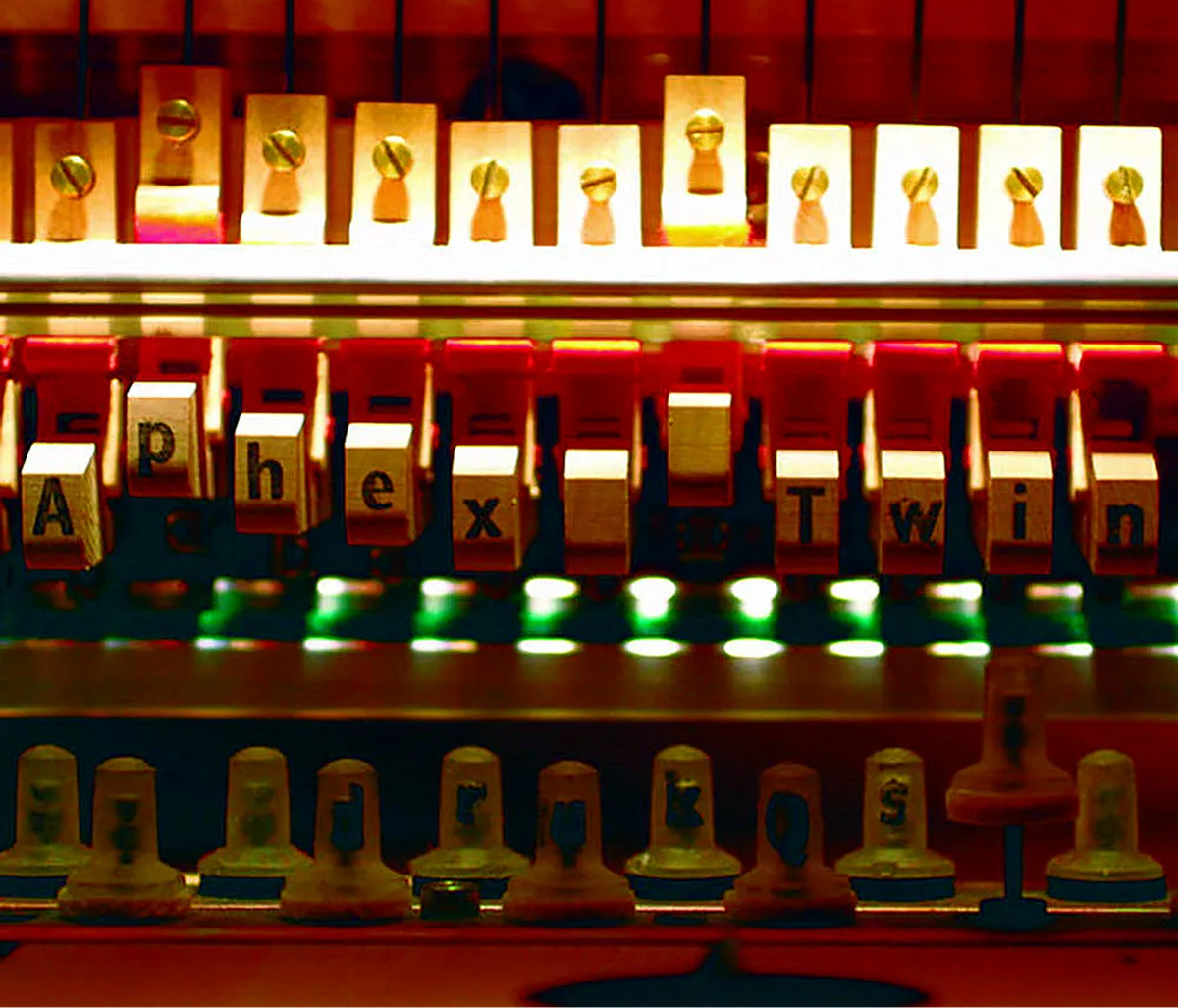Ambient music and Intelligent Dance Music (IDM) might seem like disparate genres at first glance—one evokes introspection, while the other thrives on intricate rhythms and abstract textures. Yet, these genres share a profound intersection: an obsession with sonic detail, texture, and emotional nuance.
Two seminal albums from 2001 exemplify this intersection: Aphex Twin’s Drukqs and Jan Jelinek’s Loop-Finding-Jazz-Records. Each album, released only months apart, approached the fusion from different angles – one through frenetic beat programming and prepared instrumentation, the other through micro-sampling and minimal techno rhythms – yet both share a focus on intricate detail, immersive texture, and deep emotional resonance. This article explores how these works bridge ambient music and IDM, highlighting their historical context, production craft, and the shared sonic priorities that make them enduring touchstones for producers and enthusiasts alike.
Druqks
Aphex Twin, released Drukqs on 22 October 2001 via Warp Recordsen.wikipedia.org. The album emerged under unusual circumstances: James hastily compiled this double album to preempt a leak of his unreleased tracks after he accidentally left an MP3 player on a plane. At nearly 100 minutes long, Drukqs is an intentionally sprawling work that juxtaposes extremes of Aphex Twin’s sound. On one hand, it contains rapid-fire, “meticulously-programmed” breakbeat pieces that push IDM into frenzied drum ’n’ bass territory.
On the other, it features sparse and haunting piano interludes – including prepared piano compositions clearly inspired by avant-garde composer John Cage. The album's structure while polarizing for some listeners but showcased James’s range in full relief.
The ambient side of Drukqs is marked by an obsessive attention to timbral detail. Aphex Twin embraced prepared piano (placing objects among a piano’s strings to alter its sound) those pieces were then recorded on a modified Yamaha Disklavier (a MIDI-controlled acoustic piano). The album cover even displays the piano’s inner mechanics, underscoring this fusion of the mechanical and the musical.
Tracks like “Jynweythek Ylow” and “Avril 14th” are rendered with delicate, bell-like piano tones that feel intimate and organic, yet are created through meticulous electronic control. In fact, James employed several MIDI-driven solenoid percussion devices to play real instruments on some tracks, blurring the line between programmed rhythm and live performance. The result is an electro-acoustic textural palette: the listener can hear the faint clicking of the Disklavier’s mechanisms and the resonant decay of piano strings, lending these pieces a tangible, room-like atmosphere.
Crucially, these gentle interludes on Drukqs carry a strong emotional undercurrent. The piece “Avril 14th” – a simple, lilting piano melody – became one of Aphex Twin’s best-known recordings for its wistful, reflective quality. In just two minutes, it conveys a melancholy warmth that resonates even without any electronic beats at all. James’s decision to intersperse such heartfelt, ambient compositions among his more abrasive tracks gives Drukqs an emotional depth and contrast uncommon in electronic albums of the era. When the album does dive into rapid IDM rhythms, as on tracks like “Vordhosbn” or “54 Cymru Beats”, it maintains a hyper-detailed, almost microscopic focus on sound design. Breakbeats are chopped into chaotic flurries, reassembled with surgical precision – yet buried within the chaos are ambient backdrops and surreal music-box melodies that peek through. This interplay of aggression and serenity demonstrates Aphex Twin’s production craft: he harnesses complex technology and prepared instruments in the service of atmosphere and mood. Drukqs, released at the tail end of Aphex Twin’s first decade of work, thus stands as a manifesto of IDM’s potential to be both intensely cerebral and unexpectedly intimate.
Loop Finding Jazz Records
In February 2001, Berlin-based producer Jan Jelinek offered a very different but complementary vision with Loop-Finding-Jazz-Records, released on Stefan Betke’s ~scape label. The title itself hints at the process behind the music. Jelinek built the album by sampling old jazz records, then looping and processing minuscule fragments of those recordings into new shapes.
Working out of his small Berlin flat with an Ensoniq ASR-10 hardware sampler, Jelinek wasn’t interested in jazz composition per se, but rather in the sonic texture of jazz vinyl – the crackle of the needle, the warmth of aged recordings, the ghosts of piano chords and brushed drums sliced into pieces. All of the sounds on the album “were sourced from jazz records”, yet through they're processing they've become atomized into something completely new.
In other words, Jelinek used an audio collage approach, transforming the source material so completely that without the context of it's recording process present in the title, you'd never know it was crafted from samples. The familiar timbres of acoustic instruments are present – a muted chord here, a distant vibraphone hit there – but they are smoothed into a digital haze, giving the album an entirely original character.
Despite its experimental creation, Loop-Finding-Jazz-Records is eminently listenable and deeply ambient in mood. Jelinek was aligned with the early-2000s glitch and microhouse movement, and the album pulses with a subtle 4/4 beneath the surface. However, the rhythm is more of an implied framework than a dominant feature.
Soft clicks, pops, and hisses form percussive patterns so gentle that they feel like natural texture. These tracks rarely let rhythm take prominence; instead they glide through the work, with percussion submerged in layers of soft tone and echo. The result is music that envelops you in a gentle drift, yet maintains a hypnotic groove.
The album’s sonic world is often described as tactile: its loops have a gritty, touchable quality (the physicality of old recordings and samplers) even as they repeat in an abstract, dreamlike fashion. Jelinek himself noted that he was exploring the “sonic personality” of a genre’s artifacts – essentially, the atmosphere of jazz recordings rather than jazz itself.
Consequently, Loop-Finding-Jazz-Records bears no resemblance to a traditional jazz album, yet it absorbs the listener in a similar way that classic ambient works do: by establishing a consistent, immersive mood. The record maintains a restrained, meditative energy. There are no big shifts or abrasive interruptions; instead, subtle variations in the loops and the interplay of frequencies keep the experience engaging. Each track is like a small audio ecosystem of fluttering cymbal ghosts, looping Rhodes-like tones, and crackling background static, all dancing in lockstep. It’s this marriage of micro-rhythmic structure with enveloping ambiance that made the album a cult favorite, still revered 20 years later for its unique balance of innovation and emotional warmth.
Two decades on, Drukqs and Loop-Finding-Jazz-Records remain landmark explorations of the fertile ground between ambient music and IDM. Both albums leveraged innovative production techniques – from prepared pianos to extreme sampling and audio collage – to push the sonic vocabulary of electronic music in 2001. Yet beyond their technical feats, these works endure because of the feeling they impart. They invite listeners into detailed worlds of sound that reward scrutiny while also provoking genuine emotional response. For musically literate producers and enthusiasts, these albums are more than historical artifacts; they are case studies in balancing experiment with accessibility, and precision with soul. Drukqs and Loop-Finding-Jazz-Records illustrate that the intersection of ambient and IDM is not a shallow hybrid, but a deep well of creativity – one where meticulous craftsmanship and atmospheric beauty coexist, each enhancing the other in a truly memorable listening experience.


